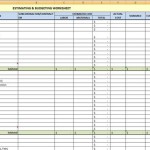What Kind of Plane Just Flew Over My House?
The question of identifying an aircraft that has flown overhead is a common one, driven by curiosity, a desire to understand one's environment, or sometimes, even concern. Determining the type of aircraft involves considering several factors, from visual and auditory clues to leveraging available online resources. This article will explore the various methods and information sources that can be used to identify the type of plane that has recently passed over a specific location.
Visual Identification: Shape, Size, and Markings
The initial step in identifying an aircraft often involves visual observation. The shape of the wings, the number of engines, and the overall size of the plane provide valuable clues. High-wing aircraft, where the wings are mounted above the fuselage, are visually distinct from low-wing aircraft, where the wings are mounted below the fuselage. The presence of a single wing (monoplane) or two wings (biplane) is also a key differentiator. The wings' general shape can be straight, swept, or delta-winged, providing further narrowing of the possibilities.
The number of engines is another significant visual indicator. Small, single-engine aircraft are typically recreational or training planes. Twin-engine aircraft are common in regional air travel and cargo operations. Larger aircraft, such as Boeing 747s or Airbus A380s, are easily identified by their four engines. The location of the engines, whether mounted on the wings or the fuselage, also contributes to identification.
Furthermore, the color scheme and markings on the aircraft can provide valuable information. While many commercial airlines have distinct livery designs, some aircraft may have military markings or unique color patterns indicating their purpose. Searching for specific markings observed on the aircraft can sometimes lead directly to its identification.
However, visual identification alone can be challenging, especially when the aircraft is flying at a high altitude or during periods of low visibility. The observer's experience and familiarity with different aircraft types are crucial for accurate visual identification. Without experience, distinguishing subtle differences between similar models can be difficult. Details such as the presence of winglets (small vertical extensions at the wingtips) or the shape of the tail assembly can be overlooked, leading to inaccurate conclusions.
In addition, visual identification can be subjective. Estimates of size, speed, and altitude can vary widely between observers. The perceived noise level can also be misleading, as this is affected by wind conditions, distance from the aircraft, and other environmental factors.
Auditory Identification: Sound Characteristics
The sound produced by an aircraft can provide clues to its identity, though it is generally a less reliable method than visual observation. The pitch, volume, and quality of the sound can be indicative of the type of engine being used and the aircraft's overall size and speed. Jet engines produce a distinct high-pitched whine, while propeller-driven aircraft generate a lower-pitched drone. The sound of a turboprop engine is often described as a combination of these two, with a distinctive "whirr" caused by the propeller interacting with the jet exhaust.
The intensity of the sound is often correlated to the aircraft's size and altitude. A very loud aircraft suggests either a large aircraft or one flying at a relatively low altitude. A quieter sound indicates a smaller aircraft or a higher altitude. However, these are generalisations. The position of the observer relative to the flight path also influences perceived sound levels. An aircraft directly overhead will typically sound louder than one passing at a significant angle. Weather conditions, such as wind direction and atmospheric temperature gradients, can also affect the propagation of sound waves, distorting the perceived sound quality.
Furthermore, the sound characteristics can be influenced by the aircraft's operational state. An aircraft taking off or landing will typically be louder than one cruising at altitude. The engine power settings used during different phases of flight can significantly affect the noise levels produced, making it more difficult to identify the aircraft based solely on sound.
The human ear is also not a calibrated instrument. Perceived loudness is subjective and can vary considerably between individuals. Background noise, such as traffic or wind, can mask the sound of the aircraft, making it even more difficult to discern its characteristics. For this reason, auditory identification works best when combined with other methods.
Leveraging Online Resources and Tracking Websites
The most accurate and reliable method for identifying an aircraft that has recently flown overhead is using online resources and flight tracking websites. These platforms aggregate data from various sources, including radar systems, Automatic Dependent Surveillance-Broadcast (ADS-B) transponders, and airline schedules, to provide real-time information on aircraft movements worldwide.
Flight tracking websites like FlightAware, Flightradar24, and ADS-B Exchange allow users to search for flights by date, time, and location. By entering the approximate time the aircraft was observed and the observer's location, the website can generate a list of all aircraft that were in the area at that time. Clicking on a specific flight will reveal detailed information about the aircraft, including its registration number, aircraft type, origin, destination, altitude, and speed. This information can be used to confirm the identity of the aircraft and learn more about its mission.
These websites often display a map showing the aircraft's flight path, allowing users to visualise the route taken and confirm whether it aligns with their observation. Some websites even offer historical data, enabling users to track flights that occurred several days or weeks in the past. This can be helpful for identifying aircraft that regularly transit a particular area, such as those operating on scheduled flight routes.
Furthermore, many of these platforms offer mobile applications that allow users to identify aircraft directly from their smartphones or tablets. By pointing the device towards the aircraft in the sky, the app can use augmented reality technology to overlay information about the flight onto the live camera feed. This provides instant identification of the aircraft and its flight details.
However, it is important to note that not all aircraft are tracked by these platforms. Some military aircraft and private aircraft may not be equipped with ADS-B transponders or may have their transponders turned off for security reasons. Additionally, data accuracy can vary depending on the quality of the data sources and the coverage area. In some remote areas, radar coverage may be limited, resulting in incomplete or inaccurate tracking information. The reliability of the data also depends on the cooperation and maintenance of the ADS-B systems installed on the aircraft.
In cases where an aircraft cannot be identified using online resources, contacting local air traffic control or airport authorities may be an option. These agencies have access to more comprehensive data and may be able to provide information about unidentified aircraft movements in the area. However, they may not be able to disclose information about certain sensitive flights for security reasons.
In addition to general flight tracking websites, specialized websites exist that focus on tracking specific types of aircraft, such as military aircraft, cargo aircraft, or government aircraft. These websites often provide more detailed information about the aircraft's mission and purpose. For example, websites dedicated to tracking military aircraft may display information about flight paths, call signs, and squadron affiliations. These resources can be valuable for identifying aircraft that are not typically tracked by general flight tracking websites.
Social media platforms and online forums can also be useful resources for identifying aircraft. Posting a description of the aircraft, its flight path, and the time it was observed on a relevant forum or social media group can elicit responses from other amateur aviation enthusiasts who may be able to provide additional information or identify the aircraft. These communities often have a wealth of knowledge and experience and can be a valuable source of assistance.
The effectiveness of using online resources relies on the accuracy of the input information. The accuracy of the date, time, and location is crucial for generating relevant results. An error of even a few minutes or a few miles can significantly affect the search results, leading to incorrect identification.

What Plane Just Flew Over My House Here S An Easy Way To Find Out

What Plane Just Flew Over My House Here S An Easy Way To Find Out

What Plane Just Flew Over My House Here S An Easy Way To Find Out

Why Am I So Excited To Have Seen A Plane Fly Over My Home It Was Tayl Tiktok

I Live In An Airplane Converted Into A Home Newsweek

Lockheed U 2 Wikipedia

Will Flying Ever Be Green Air Transport The Guardian
110 Years Ago The U S Military Got Its First Airplane Department Of Defense Story

How To Track Military Aircraft Using Ads B Data

How Airplanes Fly Airplane Science Scishow Kids
Related Posts








